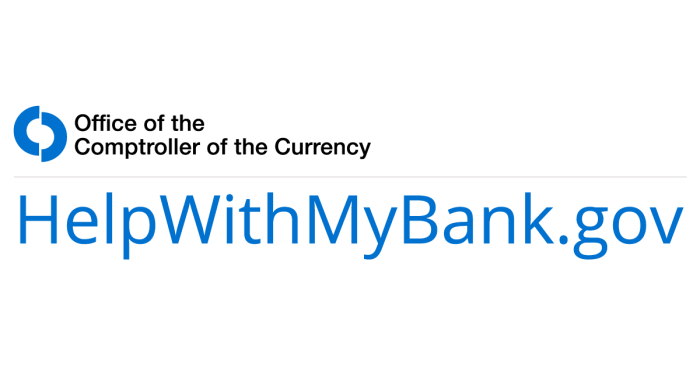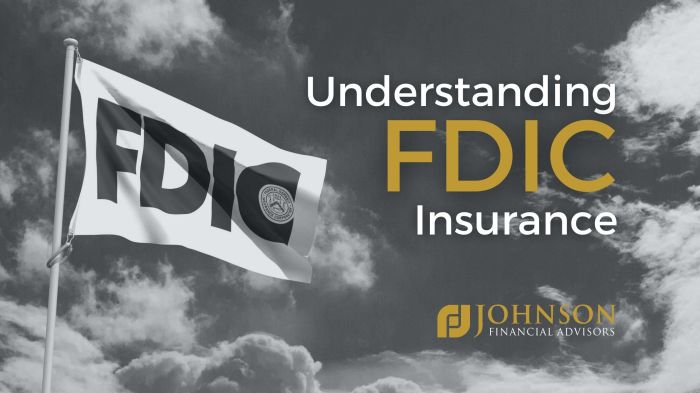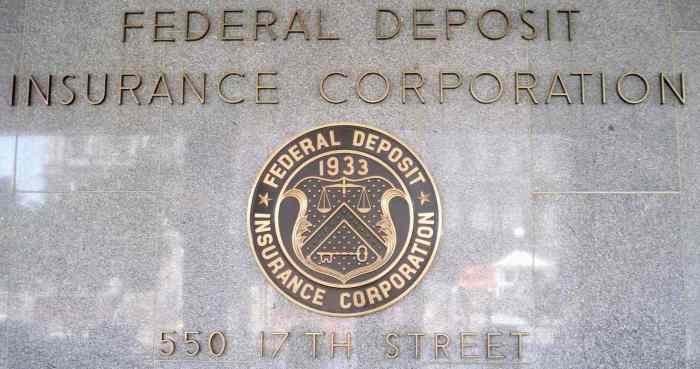Is cit fdic insured – The safety and security of your hard-earned money are paramount. When you deposit funds into a bank account, a common question arises: Is my money FDIC insured? Understanding the intricacies of FDIC insurance is crucial for every depositor, regardless of the size of their savings or the type of account they hold. This comprehensive guide will delve into the details of FDIC insurance, clarifying its coverage, limitations, and implications for your financial well-being.
What is the FDIC?
The Federal Deposit Insurance Corporation (FDIC) is an independent agency of the U.S. government created in 1933 in response to the widespread bank failures during the Great Depression. Its primary mission is to maintain stability and public confidence in the nation’s financial system by insuring deposits in banks and savings associations. This insurance protects depositors from potential losses if their bank fails.
What Does FDIC Insurance Cover?
FDIC insurance protects depositors’ accounts up to a certain limit. Currently, the standard maximum deposit insurance amount per depositor, per insured bank, for all account ownership categories is $250,000. This coverage applies to various account types, including:
Types of Accounts Covered by FDIC Insurance:, Is cit fdic insured
- Checking accounts
- Savings accounts
- Money market accounts
- Certificates of deposit (CDs)
- Retirement accounts (IRAs, but with some nuances discussed below)
It’s important to note that the $250,000 limit applies per depositor, per insured bank, for each account ownership category. This means that you can have more than $250,000 in deposits, but the FDIC insurance will only cover up to $250,000 per ownership category per bank.
Understanding Account Ownership Categories
The FDIC’s coverage is structured around different account ownership categories. This is crucial for maximizing your FDIC insurance coverage. The main categories include:
- Single Accounts: Accounts held in a single individual’s name are covered up to $250,000.
- Joint Accounts: Each owner of a joint account is insured separately up to $250,000. For example, a joint account with two owners could be insured for up to $500,000 ($250,000 per owner).
- Revocable Trust Accounts: The beneficiary of a revocable trust is insured separately up to $250,000. However, the grantor (the person who created the trust) is also insured separately up to $250,000 if they are also a beneficiary.
- Retirement Accounts (IRAs): Traditional and Roth IRAs are generally insured separately from other accounts, up to $250,000 per depositor, per insured bank. However, the rules can be complex, especially for those with multiple IRAs or other retirement accounts.
- Employee Benefit Plans: These plans, such as 401(k)s, have their own FDIC insurance rules, which are often more intricate.
What is NOT Covered by FDIC Insurance?
While FDIC insurance offers significant protection, it’s essential to understand its limitations. FDIC insurance does not cover:
- Investments: Stocks, bonds, mutual funds, and other investments are not insured by the FDIC.
- Life insurance policies: These are typically covered by state insurance guaranty associations, not the FDIC.
- Municipal bonds: These are not covered by the FDIC.
- Money market mutual funds: While many money market mutual funds invest in FDIC-insured accounts, the funds themselves are not FDIC-insured.
- Losses due to fraud or theft: While the FDIC insures deposits, it does not compensate for losses resulting from criminal activity.
How to Check if Your Bank is FDIC Insured
Verifying if your bank is FDIC insured is a straightforward process. Look for the FDIC’s official seal on the bank’s website, brochures, or signage. You can also use the FDIC’s BankFind tool on their website (www.fdic.gov) to search for a specific bank and confirm its insured status.

Source: helpwithmybank.gov
Maximizing Your FDIC Insurance Coverage
Given the $250,000 limit per depositor, per insured bank, per ownership category, it’s important to strategize to maximize your coverage. Here are some tips:
- Diversify your deposits across multiple banks: Spreading your deposits across several FDIC-insured banks can significantly increase your overall coverage.
- Utilize different account ownership categories: By using joint accounts, revocable trusts, and other ownership structures, you can potentially increase your FDIC coverage.
- Understand your bank’s insurance coverage: Contact your bank directly if you have questions about your specific coverage.
Frequently Asked Questions (FAQs)
- Q: What happens if my bank fails? A: If your bank fails, the FDIC will work to ensure that your insured deposits are quickly and efficiently transferred to another FDIC-insured bank.
- Q: How long does it take to get my money back after a bank failure? A: The FDIC aims to make insured deposits available to depositors within a few days of a bank failure. However, the exact timeframe may vary depending on the circumstances.
- Q: What if I have more than $250,000 in a single account? A: Only the first $250,000 will be covered by FDIC insurance. Any amount above that will not be insured.
- Q: Does the FDIC cover international banks? A: No, the FDIC only insures deposits in banks that are chartered and operating within the United States.
- Q: Are credit unions FDIC insured? A: No, credit unions are typically insured by the National Credit Union Administration (NCUA), a separate government agency offering similar deposit insurance.
Resources
Call to Action
Protecting your savings is a crucial aspect of financial planning. Understanding FDIC insurance is a key step in ensuring the security of your money. Take the time to review your bank accounts and understand your FDIC coverage. If you have any questions or concerns, don’t hesitate to contact your bank or the FDIC directly.

Source: johnsonfinancial.com
Essential Questionnaire: Is Cit Fdic Insured
What is the FDIC insurance limit for CIT Bank accounts?
The standard FDIC insurance limit is $250,000 per depositor, per insured bank, for each account ownership category. However, it’s crucial to check with CIT Bank and the FDIC for the most up-to-date information.
Does FDIC insurance cover all types of accounts at CIT Bank?
Generally, yes, but there might be exceptions. Checking accounts, savings accounts, and money market accounts are typically covered. However, it’s advisable to verify with CIT Bank and the FDIC for complete details regarding specific account types.
What happens if CIT Bank fails and my account is FDIC insured?
If CIT Bank were to fail, the FDIC would step in to insure your deposits up to the coverage limit. You would likely need to transfer your funds to another FDIC-insured institution. The FDIC will provide guidance on this process.
Where can I find more information about FDIC insurance and CIT Bank?

Source: thebalancemoney.com
You can visit the official websites of both the FDIC and CIT Bank for comprehensive information. Contacting CIT Bank customer service directly is also a good option for personalized clarification.
